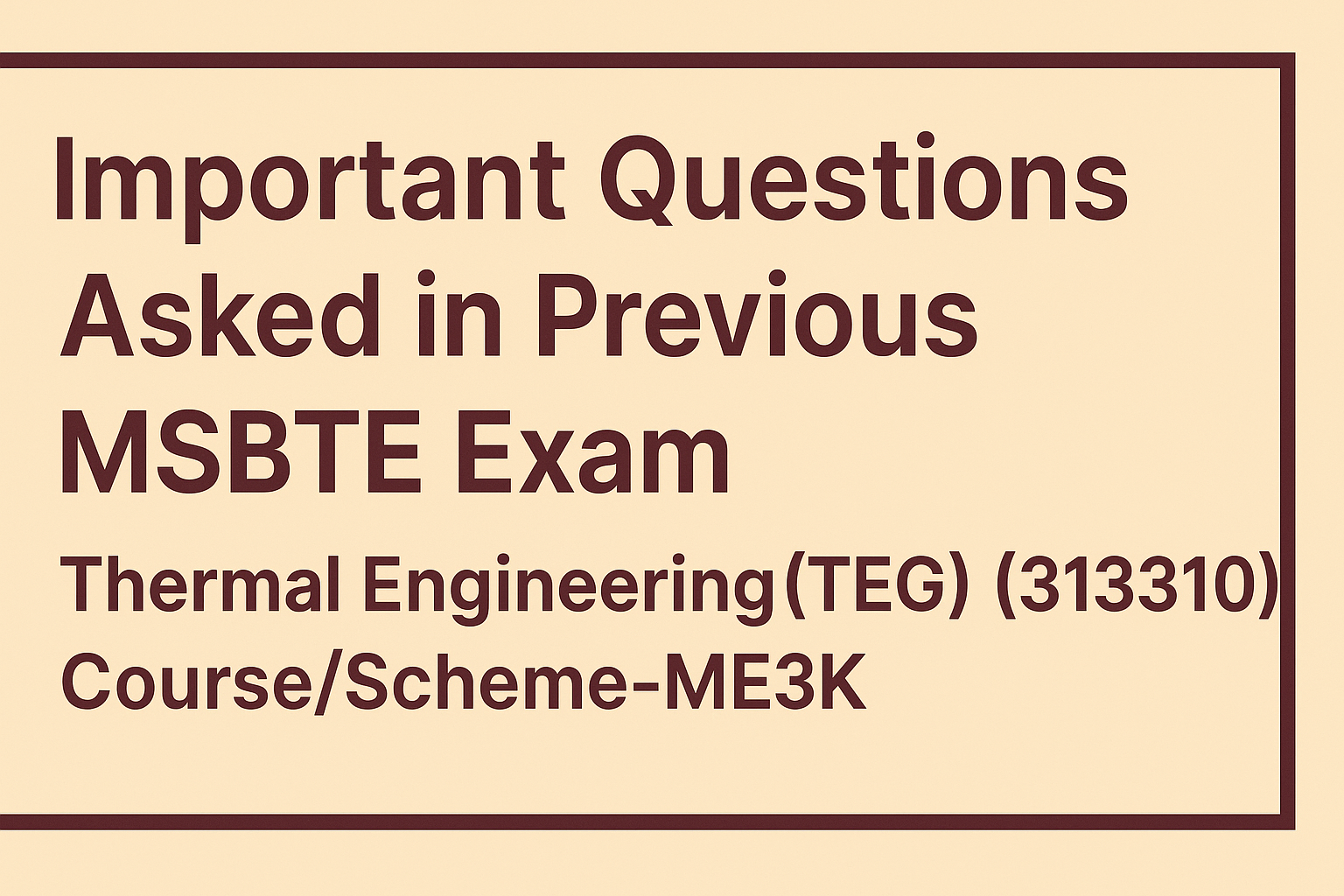Thermal Engineering(TEG) Code-313310 Syllabus
Unit – I Fundamentals of Thermodynamics
1.1 Thermodynamic system, Types of systems- Open, closed & isolated system, Extensive and Intensive
properties, Process and Cycle. Thermodynamic definition of work, heat, difference between heat and work, flow work, concepts of enthalpy and entropy.
1.2 Laws of Thermodynamics – Zeroth law, first law and second law of thermodynamics. Kelvin Planks, Clausius statements. Concept of Heat engine, Heat pump and Refrigerator.
1.3 Application of Laws of Thermodynamics – Steady flow energy equation and its application to boiler, turbine, and condenser. (No Numerical Treatment on above)
Unit – II Ideal Gases and Steam Fundamentals
2.1 Characteristics gas constant and universal gas constant. Derivation of characteristics gas equation.
2.2 Ideal gas processes – Isobaric, Isochoric, Isothermal, Isentropic, Polytropic and their representation on P-V and T-S diagrams. Determination of work, heat, internal energy, enthalpy change. (only simple numerical based on above).
2.3 Steam fundamentals – Applications of steam, generation of steam at constant pressure with representation onT-H &T-S chart. Types of steam: Wet, dry, superheated steam. Properties of steam: Sensible, latent , total heat, specificVolume, dryness fraction. use of steam table. (Only simple numericals based on above). Rankine Cycle & its representation on P-V & T-S chart. (No numerical on Rankine cycle)
Unit – III Components of Steam Power Plant
3.1 Introduction to steam power plant ,Components & layout of steam power plant. Steam Boiler- Definition as
per IBR, function , Classification of boilers, Introduction tohigh pressure boiler , Construction & working of Lamont boiler & Benson Boiler.
3.2 Steam nozzle & Steam Turbines – Function , types , applications of steam nozzles. Steam turbine –
Classification , Construction and working of Impulse and Reaction turbine. Need of compounding. Regenerative feed heating & bleeding of steam.
3.3 Steam condensers – Dalton’s law of partial pressure, function, classification of condensers, construction and working of surface Condenser. Sources of air leakage and its effect.
3.4 Cooling Towers – Classification of cooling towers, Construction and working of natural, forced and induced draught cooling tower. (No numerical Treatment for this unit)
Unit – IV Heat Transfer & Heat Exchangers
4.1 Modes of heat transfer – Conduction, convection and radiation. Conduction – Fourier’s law, conduction through slab & composite wall. Convection – Newton’s law of cooling, natural and forced convection. Radiation –absorptivity, transmissivity, reflectivity, emissivity, black body, gray body, Stefan Boltzmann law . (Only simple numerical based on heat transfer by conduction through slab & composite wall.)
4.2 Heat Exchangers – Classification, construction and working of shell and tube, plate type heat exchanger and its applications.
Unit – V Introduction to I.C. Engine & Power Cycles
5.1 Power Cycles – Carnot Cycle, Otto cycle, Diesel cycle, Dual Cycle and its representation on P-V and T-S diagram. ( No numerical on above)
5.2 Basics of I.C. Engine – Engine terminology,Classification and application of IC engines, Construction& working of two stroke & four stroke I.C. engines (S.I.
and C.I.)
Thermal Engineering(TEG) Code-313310 Notes
Unit 1 & 2 Unit – I Fundamentals of Thermodynamics & Unit – II Ideal Gases and Steam Fundamentals
Unit3 Unit – III Components of Steam Power Plant
Unit – IV Heat Transfer & Heat Exchangers
Unit – V Introduction to I.C. Engine & Power Cycles


woh I enjoy your content, saved to my bookmarks! .